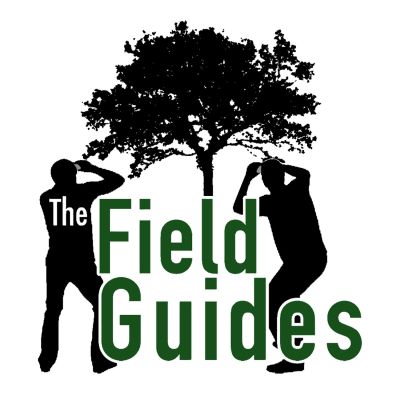Nature nerds rejoice! The Field Guides is a monthly podcast that will bring you out on the trail, focusing on the science of our North American wildlife.
http://www.thefieldguidespodcast.com/new-blog/
Ep. 49 - Whither the Snowy Owl? (Part 1)
This winter (2021) marked the first time a Snowy Owl (Bubo scandiacus) was spotted in New York City’s Central Park in 130 years. Why was it there? Where did it come from? Since 99.9% of the population immediately just thinks of Harry Potter when Snowy Owls are mentioned, the guys wanted to cast the proverbial “Lumos!” and shed some light on the subject. Join them and guest Daniel Mlodozeniec (photographer and naturalist) as they delve into the Snowy Owl’s ecology in part 1. Then, in part 2, come along as they look into the research behind what drives Snowy Owl irruptions, those irregular migrations that cause Snowies to end up in Central Park and even in places like Bermuda and Hawaii! This episode was recorded on February 1, 2021 in Buffalo, NY at the Erie Basin Marina (part 1) and Tifft Nature Preserve (part 2). Special thanks to Dan for getting up early and joining us for a cold, cold four hours! Check out the link to his work below. Episode Notes During the episode, Steve wondered if it’s illegal to use rat/rodent poison. The answer is mostly no; here in the US, certain types have been banned. When discussing if lemmings actually run off cliffs, the guys mentioned a Disney film that is likely the origin of that myth. The film is called White Wilderness, and you can read this great article from Snopes to find out more. Bill wondered, “Is a Red Phalarope a shore bird?” Yes, it is. The guys said they thought the Great Black-backed Gull is the largest gull. Turns out they were right! Check out this macabre shot of the lemmings a Snowy Owl arranged around its nest! Dan was correct in saying that the barn owl family is Tytonidae. Bill mentioned how the temperature in Siberia reached over 100 degrees F during the summer of 2020. Read more about it here. Shortly after we wrapped, the Snowy Owl in Central; Park reappeared. Read about it here. Links Check out Dan’s work: Dan’s Instagram: into_the_wild_photography2018 Partners in Flight The International Union for the Conservation of Nature (IUCN) Project Snowstorm - uses innovative science to understand snowy owls, and to engage people in their conservation through outreach and education. More info about Lemmings: Brown Lemming (Lemmus) species: Find out more about the Norwegian Lemming (Lemmus lemmus), and other members of this genus Collared Lemming (Dicrostonyx) - Check out this overview of the genus Support The Field Guides Patreon Make a onetime Paypal donation. Our Sponsor Gumleaf Boots, USA Picture Credit Thank you to Always Wandering Art (Website and Etsy Shop) for providing this episode’s artwork, as well as the art for many of our previous episodes! Works Cited Snowy Owl sounds from the Cornell Lab of Ornithology / Macaulay Library Chang, A.M. and Wiebe, K.L., 2018. Habitat selection by wintering male and female Snowy Owls on the Canadian prairies in relation to prey abundance and a competitor, the Great Horned Owl. Journal of Field Ornithology, 89(1), pp.64-77. Curk, T., McDonald, T., Zazelenchuk, D., Weidensaul, S., Brinker, D., Huy, S., Smith, N., Miller, T., Robillard, A., Gauthier, G. Chamberlin, M.L., 1980. Winter hunting behavior of a snowy owl in Michigan. The Wilson Bulletin, pp.116-120. and Lecomte, N., 2018. Winter irruptive Snowy Owls (Bubo scandiacus) in North America are not starving. Canadian Journal of Zoology, 96(6), pp.553-558. Fuller, M., Holt, D. and Schueck, L., 2003. Snowy owl movements: variation on the migration theme. In Avian migration (pp. 359-366). Springer, Berlin, Heidelberg. Gessaman, J.A., 1972. Bioenergetics of the snowy owl (Nyctea scandiaca). Arctic and Alpine Research, 4(3), pp.223-238. Gross, A.O., 1947. Cyclic invasions of the snowy owl and the migration of 1945-1946. The Auk, 64(4), pp.584-601. Heggøy, O., Aarvak, T., Øien, I.J., Jacobsen, K.O., Solheim, R., Zazelenchuk, D., Stoffel, M. and Kleven, O., 2017. Effects of satellite transmitters on survival in Snowy Owls Bubo scandiacus. Holt, D.W. and Zetterberg, S.A., 2008. The 2005 to 2006 Snowy Owl irruption migration to western Montana. Northwestern Naturalist, 89(3), pp.145-151. Koenig, W.D. and Knops, J.M., 2001. Seed‐crop size and eruptions of North American boreal seed‐eating birds. Journal of Animal Ecology, 70(4), pp.609-620. McCrary, M.D., Bloom, P.H., Porter, S. and Sernka, K.J., 2019. Facultative Migration: New Insight from a Raptor. Journal of Raptor Research, 53(1), pp.84-90. Robillard, A., Gauthier, G., Therrien, J.F. and Bêty, J., 2018. Wintering space use and site fidelity in a nomadic species, the snowy owl. Journal of Avian Biology, 49(5), pp.jav-01707. Robillard, A., Therrien, J.F., Gauthier, G., Clark, K.M. and Bêty, J., 2016. Pulsed resources at tundra breeding sites affect winter irruptions at temperate latitudes of a top predator, the snowy owl. Oecologia, 181(2), pp.423-433. Santonja, P., Mestre, I., Weidensaul, S., Brinker, D., Huy, S., Smith, N., Mcdonald, T., Blom, M., Zazelenchuck, D., Weber, D. and Gauthier, G., 2019. Age composition of winter irruptive Snowy Owls in North America. Ibis, 161(1), pp.211-215. Solheim, R., 2012. Wing feather moult and age determination of Snowy Owls Bubo scandiacus. Therrien, J.F., Gauthier, G., Pinaud, D. and Bêty, J., 2014. Irruptive movements and breeding dispersal of snowy owls: a specialized predator exploiting a pulsed resource. Journal of Avian biology, 45(6), pp.536-544. Winter, R.E., 2016. Hunting Behaviors and Foraging Success of Winter Irruptive Snowy Owls in New York.
